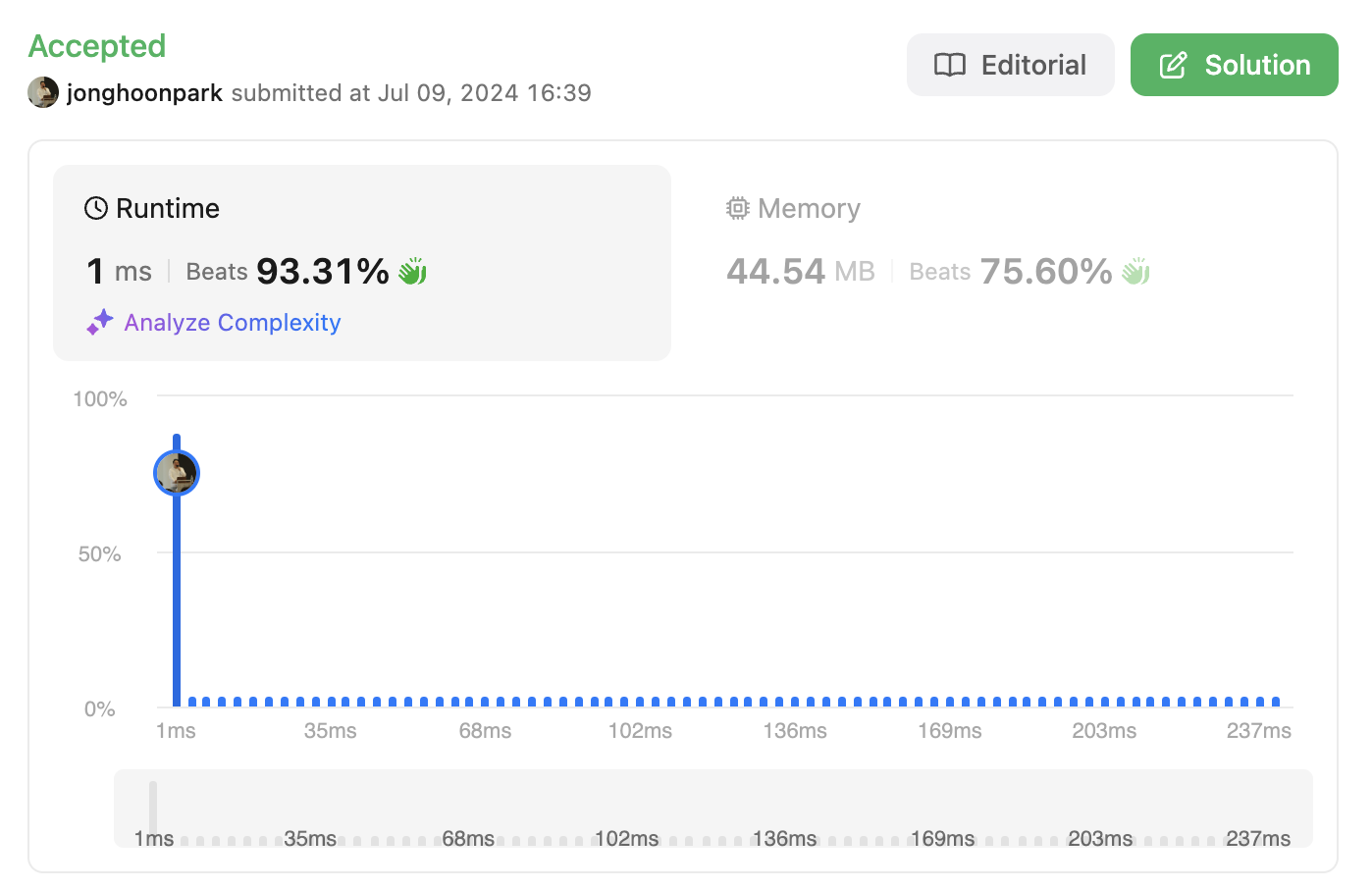(Leetcode) 152 - Maximum Product Subarray 풀이
기회가 되어 달레님의 스터디에 참여하여 시간이 될 때마다 한문제씩 풀어보고 있다.
https://leetcode.com/problems/maximum-product-subarray/
내가 작성한 풀이
그냥 모든 케이스를 고려하여 코드를 작성하였다.
다음과 같은 부분들을 고려했다.
- 0 을 만나면 구간이 끊킨다.
- 음수를 만나더라도 다음 음수를 만나면 양수가 될 수 있다.
- 음수를 만났을 때 다음 음수가 없다면, 이전 부분은 더 이상 쓸모가 없다.
class Solution {
public int maxProduct(int[] nums) {
int max = Integer.MIN_VALUE;
int temp = 0;
int lastZeroIndex = 0;
for (int i = 0; i < nums.length; i++) {
int current = nums[i];
if (temp == 0) {
temp = current;
lastZeroIndex = i;
} else {
if (current == 0) {
temp = 0;
} else if (temp > 0 && current < 0) {
if (hasNextMinus(nums, i + 1)) {
temp = temp * current;
} else {
temp = temp * current;
for (int j = lastZeroIndex; j < i + 1; j++) {
temp = temp / nums[j];
if (temp > 0) {
break;
}
}
}
} else {
temp = temp * current;
}
}
max = Math.max(max, temp);
if (temp < 0 && !hasNextMinus(nums, i + 1)) {
temp = 0;
}
}
return max;
}
private boolean hasNextMinus(int[] nums, int i) {
for (; i < nums.length; i++) {
if (nums[i] < 0) {
return true;
} else if (nums[i] == 0) {
return false;
}
}
return false;
}
}
TC, SC
시간 복잡도는 O(n^2)이다. 공간 복잡도는 O(1)이다. hasNextMinus 이 적게 호출된다면 시간 복잡도는 O(n)에 가깝게 동작한다.

beat 93.31%